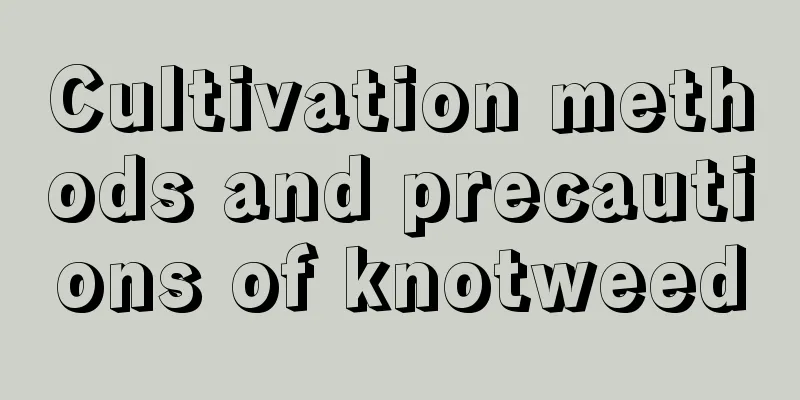Cultivation methods and precautions of knotweed

1. WateringIn spring and autumn, just keep the soil in the pot slightly moist when watering. In summer, when the temperature is high, the water evaporates quickly, so you can water more often. The best time to water is in the morning or afternoon when the sunlight is not very strong. In the cold winter weather, the plant grows very slowly, so try to water it as little as possible to prevent frost damage and waterlogging. 2. SoilIn terms of soil selection, in order to better cultivate its fleshy roots, it is best to choose sandy loam for cultivation. At the same time, the drainage performance of this soil is also very good, which can greatly reduce the possibility of root rot caused by water accumulation. 3. FertilizationDuring the growing season, in order to ensure that it can better differentiate flower buds, phosphorus-potassium compound fertilizer should be applied once in early autumn. After flowering, nitrogen fertilizer is generally used as the main fertilizer, and the focus at this time is on growing branches and leaves. Ensure it has the nutrients it needs for growth, and try not to fertilize at other times. 4. LightingWhen cultivating it, you should place it in a sunny place for maintenance. Pay attention to shade in summer to prevent sunburn. If its leaves turn yellow, it is likely caused by excessive light. In winter, as long as there is enough light and the temperature is suitable indoors, it will be fine. 5. NotesWhen raising plants indoors in winter, pay attention to ventilation. If the air is not circulating, pests and diseases are likely to occur. When watering it, be careful not to allow water to accumulate. Waterlogging can cause root rot and leaves to fall off, seriously affecting next year's flowering. |
>>: Goldfish Chlorophytum breeding methods and precautions
Recommend
Can I still plant beans in August?
Plum beans are actually an annual climbing herbac...
How to grow clematis in winter
1. Adequate sunlight Clematis is a light-loving p...
How to spend the winter in potted grapes? What to do in winter
1. Plastic surgery When the temperature drops in ...
How to prune jasmine to achieve the most vigorous flowering (does jasmine need to be pruned after it blooms)
How to prune jasmine to make it bloom more Jasmin...
When is the best time to sow aster?
Aster sowing time Aster belongs to the genus Aste...
How to prolong the flowering period of Gloxinia
1. Temperature: Generally speaking, this kind of ...
How to take care of newly bought lilies
1. Choose the right soil The newly purchased soil...
Planting flowers and beans around the time of Grain Rain will keep them alive no matter how hard you try
Cosmos Cosmos has a long flowering period, blooms...
How to plant peanuts so that they germinate quickly and produce high yields?
As an important oil crop , peanuts often encounte...
What does orchid symbolize?
1. What does orchid symbolize? Brotherly Love: Or...
The correct way to water passion fruit, what will happen if you water too much
1. Watering method If you want to know the correc...
The language and legend of rapeseed flowers
1. Flower Language Rapeseed flowers look so ordin...
The role and efficacy of peaches
1. Diuretic Peaches contain phenol, which can act...
How to grow Ganoderma
1. Prepare the substrate The culture matrix can b...
How to raise caterpillars and succulents? How to raise caterpillars
The scientific name of Caterpillar Succulent is W...









